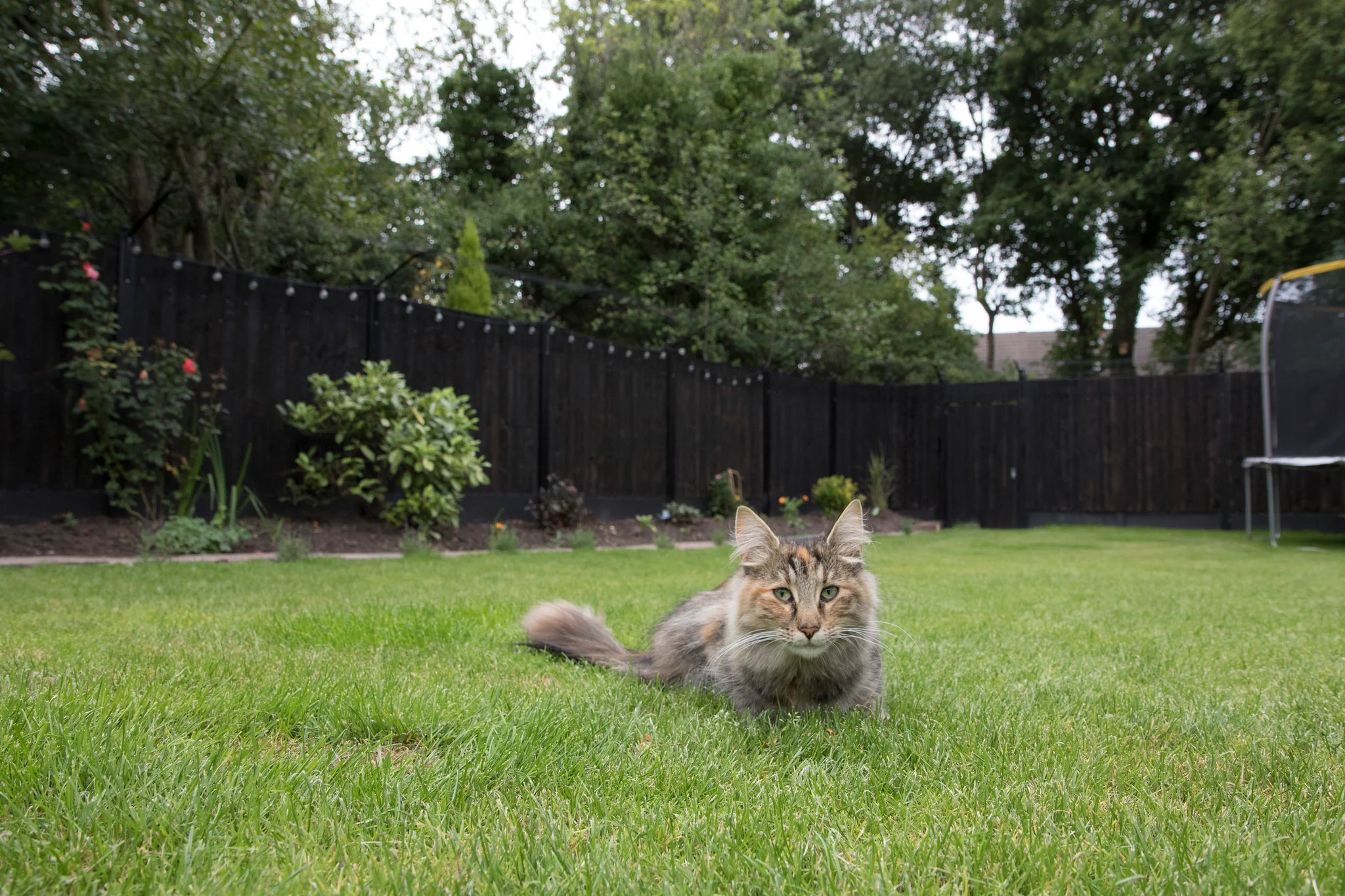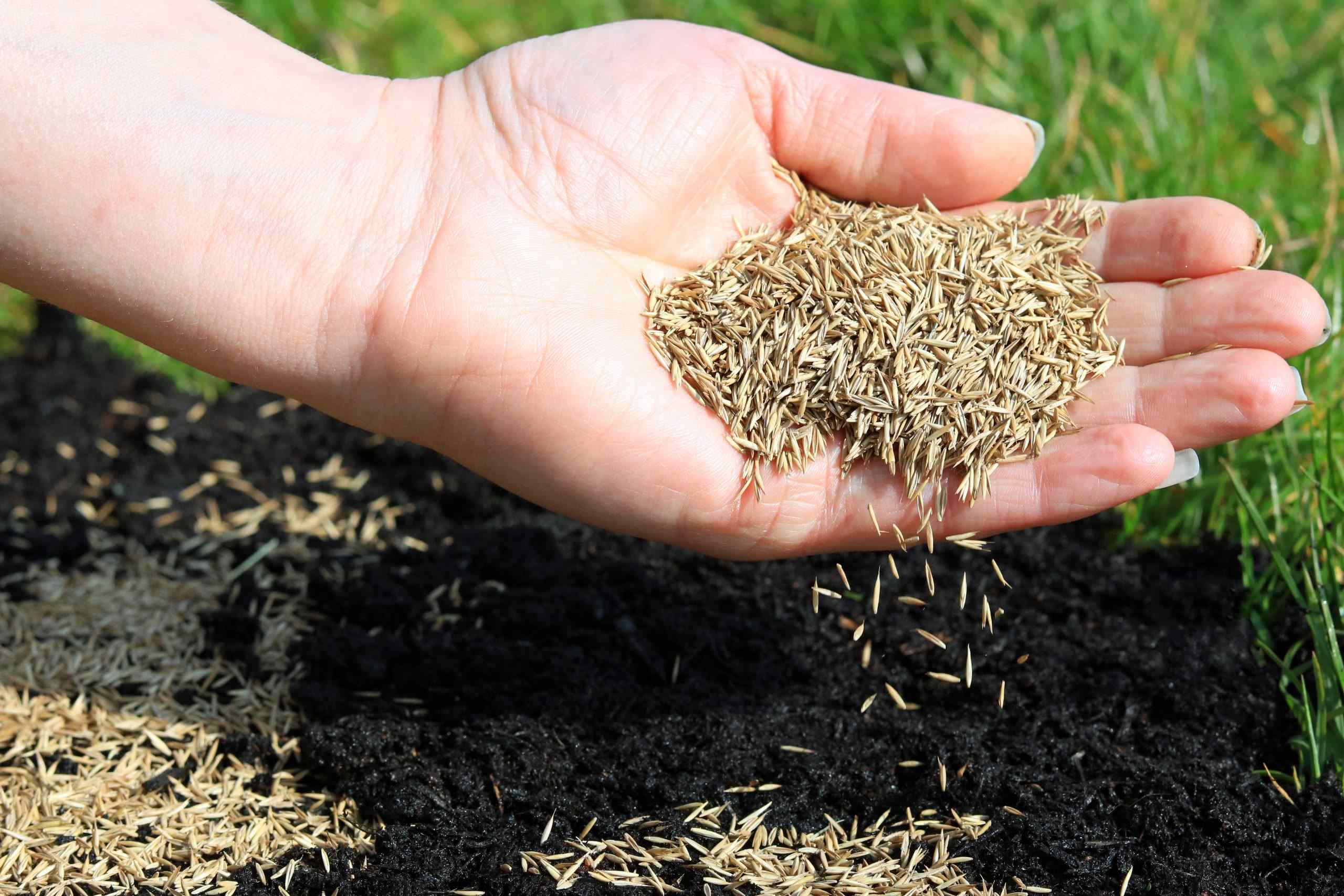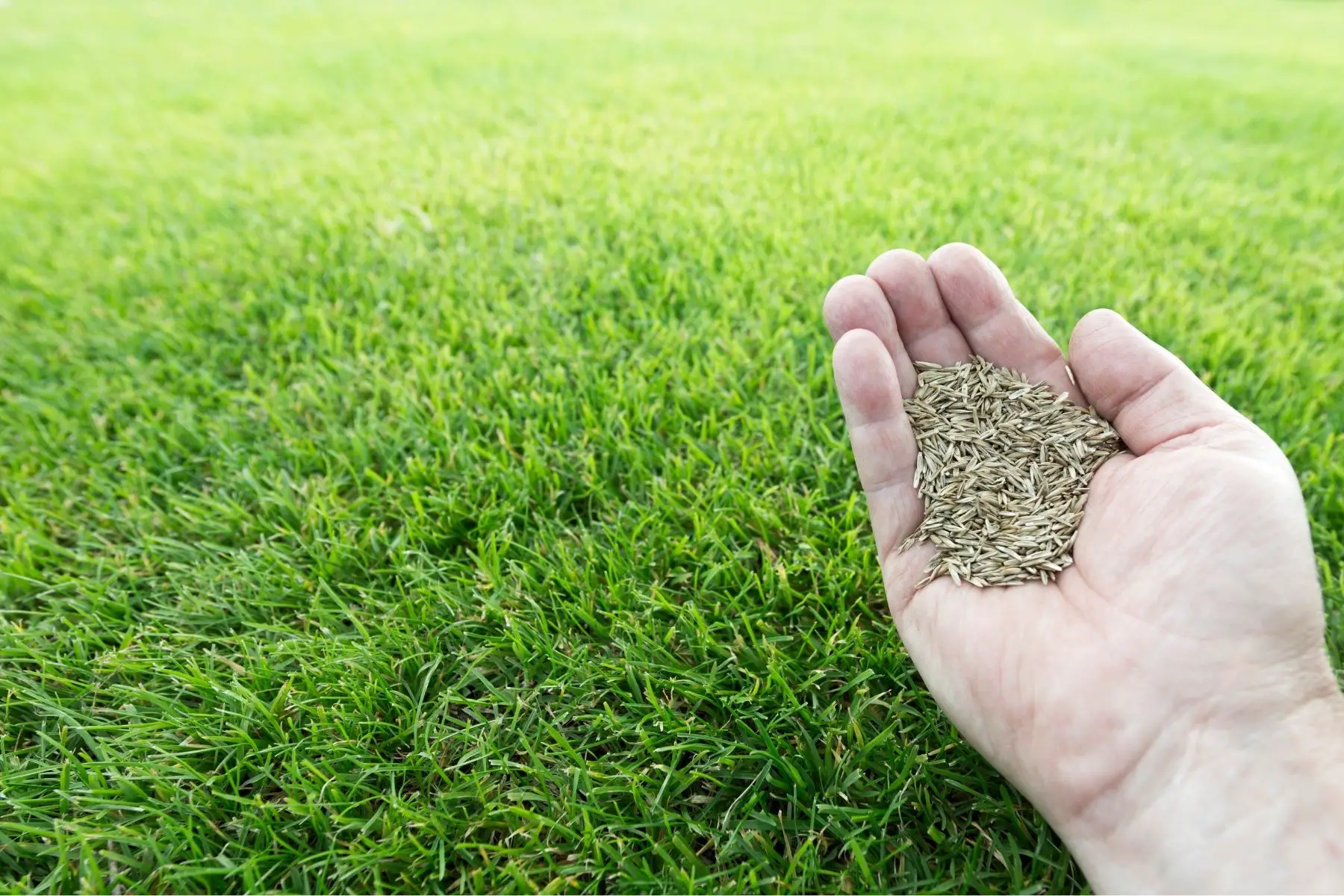Home>Gardening Basics>Understanding Soil>How To Grow Cat Grass Without Soil


Understanding Soil
How To Grow Cat Grass Without Soil
Published: February 9, 2024
Learn how to grow cat grass without soil and understand the importance of soil in plant growth. Discover soil-free methods for cultivating healthy cat grass at home.
(Many of the links in this article redirect to a specific reviewed product. Your purchase of these products through affiliate links helps to generate commission for Chicagolandgardening.com, at no extra cost. Learn more)
Table of Contents
Introduction
What is Cat Grass?
Cat grass, also known as pet grass, is a type of grass that is grown specifically for the purpose of being consumed by pets, particularly cats. It is typically a mix of cereal grasses such as barley, wheat, oat, or rye. Cat grass provides essential nutrients and fiber that aid in digestion and help prevent the formation of hairballs in cats.
Many pet owners choose to grow cat grass at home to provide their furry companions with a safe and healthy alternative to outdoor grass, which may be treated with pesticides or other harmful chemicals. Additionally, indoor cats may not have access to outdoor greenery, making cat grass a valuable addition to their diet and environment.
Growing cat grass without soil is an innovative and practical way to nurture this beneficial plant indoors, allowing pet owners to provide their feline friends with a fresh and accessible source of nutrition and entertainment. In the following sections, we will explore the benefits of cat grass, the process of choosing the right seeds, and the steps to successfully grow and maintain cat grass without soil. Whether you are a seasoned gardener or a novice plant enthusiast, cultivating cat grass can be a rewarding and enjoyable experience for both you and your beloved pets.
What is Cat Grass?
Cat grass, also known as pet grass, is a type of grass that is grown specifically for the purpose of being consumed by pets, particularly cats. It is typically a mix of cereal grasses such as barley, wheat, oat, or rye. Cat grass provides essential nutrients and fiber that aid in digestion and help prevent the formation of hairballs in cats.
Many pet owners choose to grow cat grass at home to provide their furry companions with a safe and healthy alternative to outdoor grass, which may be treated with pesticides or other harmful chemicals. Additionally, indoor cats may not have access to outdoor greenery, making cat grass a valuable addition to their diet and environment.
Growing cat grass without soil is an innovative and practical way to nurture this beneficial plant indoors, allowing pet owners to provide their feline friends with a fresh and accessible source of nutrition and entertainment. In the following sections, we will explore the benefits of cat grass, the process of choosing the right seeds, and the steps to successfully grow and maintain cat grass without soil. Whether you are a seasoned gardener or a novice plant enthusiast, cultivating cat grass can be a rewarding and enjoyable experience for both you and your beloved pets.
Benefits of Cat Grass
Introducing cat grass into your feline companion’s environment offers a multitude of benefits that contribute to their overall well-being. Here are some of the advantages of incorporating cat grass into your pet’s routine:
- Digestive Health: Cat grass provides essential nutrients and dietary fiber that promote healthy digestion in cats. Consuming cat grass can help prevent the formation of hairballs and aid in the elimination of indigestible matter from the digestive tract.
- Behavioral Stimulation: Chewing on cat grass can serve as a natural form of entertainment and mental stimulation for cats. It allows them to engage in a natural behavior, similar to grazing on outdoor grass, which can be particularly beneficial for indoor cats.
- Nutritional Enrichment: Cat grass contains vitamins, minerals, and chlorophyll, offering a nutritional boost to your pet’s diet. It can be a valuable source of supplemental nutrients, especially for cats that primarily consume commercial pet food.
- Safe Alternative to Outdoor Grass: Growing cat grass indoors provides a safe and controlled environment for your cat to enjoy greenery without the potential risks associated with outdoor grass, such as exposure to pesticides, herbicides, or toxic plants.
- Promotes Hydration: The high moisture content of cat grass can encourage cats to increase their water intake, which is beneficial for their overall hydration and urinary tract health.
By offering your cat access to cat grass, you are supporting their physical and emotional well-being while enriching their living environment. The next step in this guide will delve into the process of selecting the right seeds to ensure successful cultivation of cat grass without soil.
Choosing the Right Seeds
When embarking on the journey of growing cat grass without soil, selecting the appropriate seeds is a crucial first step. The type of seeds you choose will directly impact the growth and nutritional value of the resulting cat grass. Here are some key factors to consider when choosing cat grass seeds:
- Grass Variety: Cat grass is commonly cultivated from cereal grass seeds such as barley, wheat, oat, or rye. These grasses are safe for cats to consume and provide essential nutrients. When selecting seeds, opt for varieties that are specifically labeled as “cat grass” or “pet grass” to ensure they are suitable for feline consumption.
- Organic and Untreated Seeds: Prioritize organic and untreated seeds to avoid potential exposure to pesticides, herbicides, or other harmful chemicals. Organic seeds are free from synthetic additives, making them a safer choice for your cat’s health.
- Germination Rate: Choose seeds with a high germination rate to increase the likelihood of successful and robust growth. High-quality seeds will sprout more reliably, leading to a bountiful supply of cat grass for your pet.
- Packaging and Storage: Check the packaging date and storage recommendations on the seed packet. Fresh seeds stored in a cool, dry environment are more likely to retain their viability and germination potential.
Before purchasing cat grass seeds, it is advisable to research reputable suppliers or nurseries that offer high-quality, cat-safe grass seed varieties. Additionally, consider the quantity of seeds needed based on the intended scale of cultivation. Whether you plan to grow cat grass for a single pet or multiple feline companions, ensuring a sufficient supply of seeds is essential for continuous cultivation.
By carefully selecting the right seeds, you set the stage for a successful and nourishing cat grass growing experience. The subsequent section will delve into the art of cultivating cat grass without soil, providing insights into the innovative techniques that make indoor cultivation a thriving and accessible endeavor.
Growing Cat Grass Without Soil
Embarking on the endeavor of growing cat grass without soil opens up a world of innovative and accessible cultivation techniques. By utilizing hydroponic or soilless growing methods, you can nurture vibrant and nutrient-rich cat grass indoors, providing your feline companions with a continuous source of fresh greens. Here’s a step-by-step guide to growing cat grass without soil:
- Choose a Suitable Growing Container: Select a shallow and wide container that allows for ample space for the grass to spread its roots. Consider using a shallow tray or a specialized hydroponic growing kit designed for soilless cultivation.
- Prepare the Growing Medium: Opt for a soilless growing medium such as coconut coir, peat moss, or vermiculite. These mediums provide structural support to the grass roots while retaining moisture essential for healthy growth.
- Moisten the Growing Medium: Before sowing the seeds, moisten the growing medium to achieve a damp, but not waterlogged, consistency. Ensure that excess water can drain from the container to prevent waterlogging.
- Sow the Seeds: Evenly distribute the cat grass seeds over the moist growing medium, gently pressing them into the surface. Avoid overcrowding the seeds to allow sufficient space for each plant to thrive.
- Provide Adequate Light: Place the growing container in a well-lit area with access to natural sunlight or artificial grow lights. Cat grass requires ample light to support photosynthesis and promote healthy growth.
- Maintain Optimal Moisture Levels: Monitor the moisture level of the growing medium, ensuring that it remains consistently damp. Avoid allowing the medium to dry out completely, as adequate moisture is essential for seed germination and sustained growth.
- Monitor Growth and Development: As the cat grass begins to sprout, continue to observe its progress and adjust light exposure and moisture levels as needed. Ensure proper ventilation to prevent mold or mildew formation.
By embracing soilless cultivation techniques, you can create an ideal environment for cat grass to thrive, offering a continuous supply of fresh greens for your feline companions. The next section will delve into the essential aspects of watering and caring for cat grass, ensuring its sustained vitality and nutritional value for your pets.
Watering and Care
Proper watering and attentive care are essential components of nurturing vibrant and healthy cat grass without soil. By implementing mindful watering practices and providing adequate care, you can ensure the sustained vitality and nutritional value of the cat grass for your feline companions. Here are the key steps to effectively water and care for cat grass grown without soil:
- Monitor Moisture Levels: Regularly assess the moisture level of the growing medium to maintain a consistently damp environment. Avoid overwatering, which can lead to waterlogged conditions, and under-watering, which may hinder the growth of the cat grass.
- Watering Frequency: Depending on the environmental conditions and the moisture retention capacity of the growing medium, adjust the frequency of watering to sustain optimal moisture levels. Aim to keep the growing medium damp, but not saturated, throughout the growth cycle.
- Use Filtered or Distilled Water: When watering cat grass, opt for filtered or distilled water to minimize the presence of impurities and chemicals that may affect the health of the plants. Clean water contributes to the purity and nutritional quality of the cat grass.
- Provide Adequate Air Circulation: Ensure proper ventilation around the growing container to prevent the buildup of excessive humidity, which can create an environment conducive to mold or mildew. Adequate air circulation supports the overall health of the cat grass.
- Regular Maintenance: Remove any yellowing or wilted blades of grass to promote the continuous growth of healthy foliage. This maintenance practice encourages the development of fresh shoots and sustains the overall vitality of the cat grass.
- Observe Sunlight Exposure: Monitor the light exposure of the cat grass, ensuring that it receives an adequate amount of natural sunlight or artificial grow lights. Position the growing container in a well-lit area to support robust growth and photosynthesis.
By conscientiously tending to the watering and care needs of cat grass grown without soil, you can foster an environment that promotes lush and nourishing greens for your beloved pets. The upcoming section will explore the rewarding process of harvesting cat grass, allowing you to provide a continuous supply of fresh and beneficial greens for your feline companions.
Harvesting Cat Grass
Harvesting cat grass marks the culmination of the cultivation process, offering a bountiful yield of vibrant greens for your feline companions to enjoy. By engaging in the art of mindful harvesting, you can ensure a continuous and nourishing supply of fresh cat grass while promoting the sustained growth of new foliage. Here are the essential steps for harvesting cat grass:
- Wait for Optimal Growth: Allow the cat grass to reach a height of 4 to 6 inches before initiating the harvesting process. At this stage, the grass blades are at their peak nutritional value, offering a potent source of essential nutrients for your pets.
- Use Clean and Sharp Scissors: Prior to harvesting, ensure that your scissors or gardening shears are clean and sharp. This helps maintain the hygiene of the harvested grass and facilitates a precise and gentle cutting process.
- Trim the Grass Blades: With gentle and steady hand movements, trim the cat grass blades just above the soil or growing medium. Avoid cutting too close to the roots, allowing the remaining grass to continue its growth cycle and produce fresh foliage.
- Collect and Present the Harvested Grass: Gather the freshly harvested cat grass in a clean and pet-safe container, such as a shallow dish or a designated pet grass planter. Present the harvested grass to your feline companions, offering them a delightful and nutritious treat.
- Observe Regrowth and Maintenance: After harvesting, monitor the remaining cat grass for regrowth and continued vitality. Maintain optimal watering and care practices to encourage the development of new shoots and sustain a consistent supply of fresh greens.
Harvesting cat grass not only provides a rewarding experience for pet owners but also contributes to the well-being and enrichment of feline companions. By incorporating the freshly harvested cat grass into your pets’ routine, you can offer them a natural and nourishing source of dietary fiber, vitamins, and minerals, promoting their overall health and satisfaction.
Conclusion
Embarking on the journey of growing cat grass without soil opens the door to a fulfilling and enriching experience for both pet owners and their beloved feline companions. By cultivating vibrant and nutrient-rich cat grass indoors, you provide a continuous source of fresh greens that contribute to the well-being and vitality of your pets. The innovative techniques of soilless cultivation, coupled with attentive care and mindful harvesting, enable you to create an environment where cat grass flourishes, offering a myriad of benefits for your feline friends.
From promoting digestive health and behavioral stimulation to providing a safe alternative to outdoor grass, cat grass plays a pivotal role in enhancing the lives of indoor cats and outdoor pets alike. The process of selecting the right seeds, nurturing the growth of cat grass, and engaging in the art of harvesting culminates in a rewarding journey that strengthens the bond between pet owners and their furry companions.
As you witness the lush greenery of cat grass thriving in your home, take joy in the knowledge that you are providing a natural and wholesome source of nutrition for your pets. The act of cultivating cat grass without soil transcends the realm of gardening; it becomes a testament to the care and dedication invested in nurturing the well-being of your cherished pets.
So, as you embark on this enriching endeavor, may the vibrant hues of cat grass and the contented purrs of your feline companions serve as a testament to the joy and fulfillment derived from cultivating a thriving indoor garden that nourishes both body and spirit.






